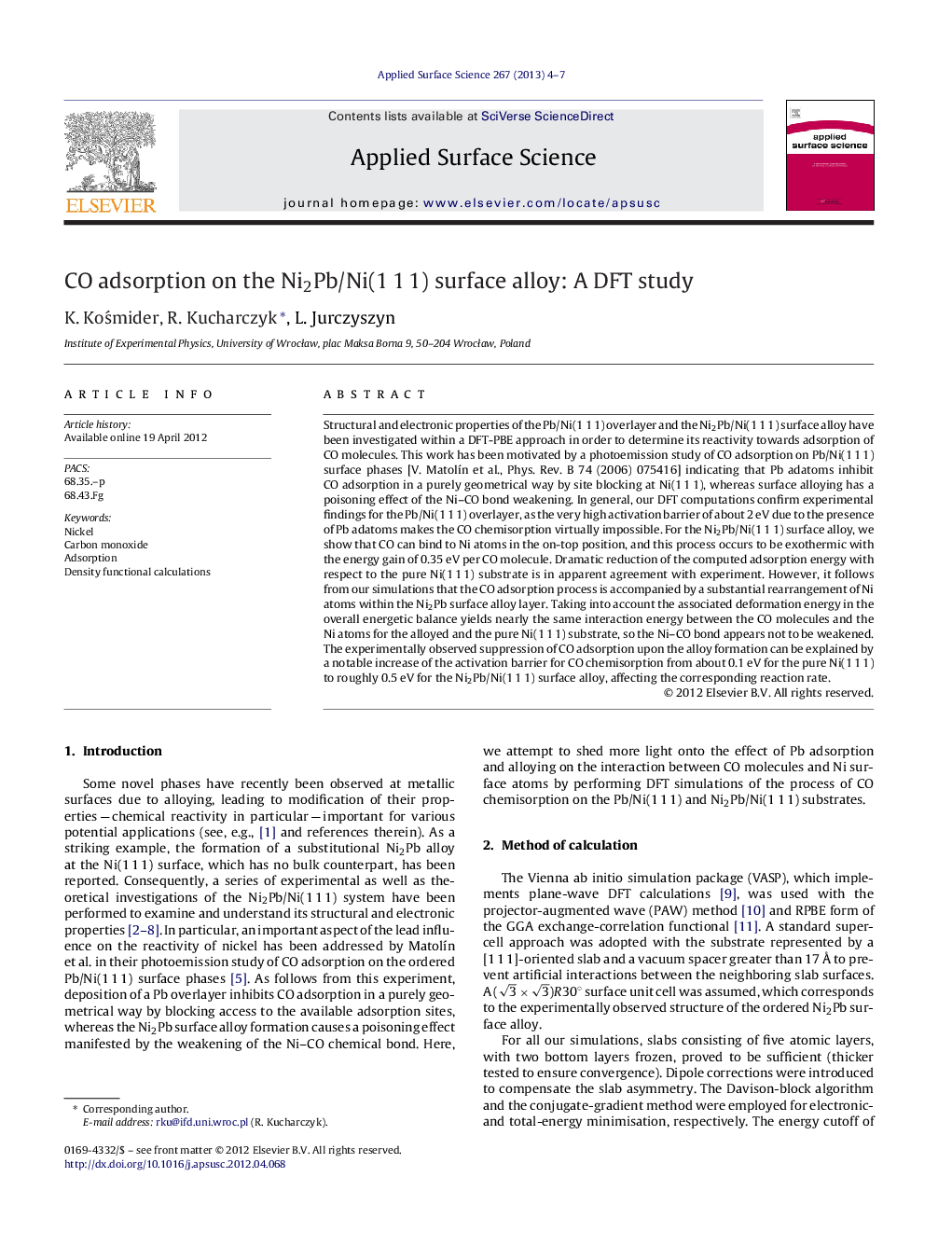| Article ID | Journal | Published Year | Pages | File Type |
|---|---|---|---|---|
| 5363450 | Applied Surface Science | 2013 | 4 Pages |
Structural and electronic properties of the Pb/Ni(1Â 1Â 1) overlayer and the Ni2Pb/Ni(1Â 1Â 1) surface alloy have been investigated within a DFT-PBE approach in order to determine its reactivity towards adsorption of CO molecules. This work has been motivated by a photoemission study of CO adsorption on Pb/Ni(1Â 1Â 1) surface phases [V. MatolÃn et al., Phys. Rev. B 74 (2006) 075416] indicating that Pb adatoms inhibit CO adsorption in a purely geometrical way by site blocking at Ni(1Â 1Â 1), whereas surface alloying has a poisoning effect of the Ni-CO bond weakening. In general, our DFT computations confirm experimental findings for the Pb/Ni(1Â 1Â 1) overlayer, as the very high activation barrier of about 2Â eV due to the presence of Pb adatoms makes the CO chemisorption virtually impossible. For the Ni2Pb/Ni(1Â 1Â 1) surface alloy, we show that CO can bind to Ni atoms in the on-top position, and this process occurs to be exothermic with the energy gain of 0.35 eV per CO molecule. Dramatic reduction of the computed adsorption energy with respect to the pure Ni(1Â 1Â 1) substrate is in apparent agreement with experiment. However, it follows from our simulations that the CO adsorption process is accompanied by a substantial rearrangement of Ni atoms within the Ni2Pb surface alloy layer. Taking into account the associated deformation energy in the overall energetic balance yields nearly the same interaction energy between the CO molecules and the Ni atoms for the alloyed and the pure Ni(1Â 1Â 1) substrate, so the Ni-CO bond appears not to be weakened. The experimentally observed suppression of CO adsorption upon the alloy formation can be explained by a notable increase of the activation barrier for CO chemisorption from about 0.1 eV for the pure Ni(1Â 1Â 1) to roughly 0.5 eV for the Ni2Pb/Ni(1Â 1Â 1) surface alloy, affecting the corresponding reaction rate.
⺠The effect of Pb adsorption and alloying on the reactivity of Ni(1 1 1) surface towards CO adsorption is explored by DFT simulations. ⺠Very high activation barrier of about 2 eV due to Pb adatoms makes CO chemisorption unfeasible for the Pb/Ni(1 1 1) overlayer. ⺠CO can adsorb on Ni2Pb/Ni(1 1 1) surface alloy in on-top position with adsorption energy of 0.35 eV, but causes substantial substrate reconstruction. ⺠Taking into account the substrate deformation energy leads to the same Ni-CO binding energy for pure Ni(1 1 1) and alloyed Ni2Pb/Ni(111) surface. ⺠Considerably higher activation barrier as compared to pure Ni(1 1 1) explains suppression of CO chemisorption upon Ni2Pb alloy formation.
